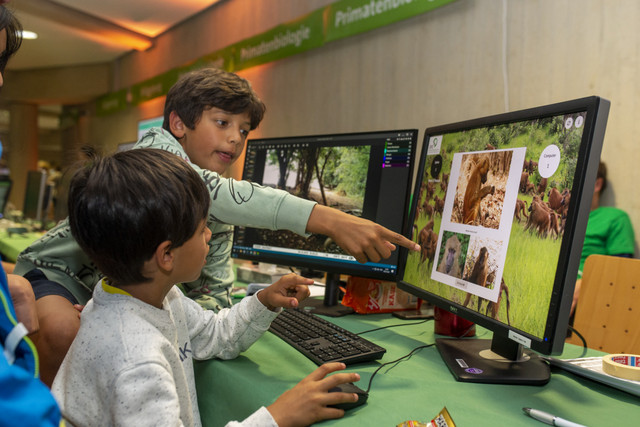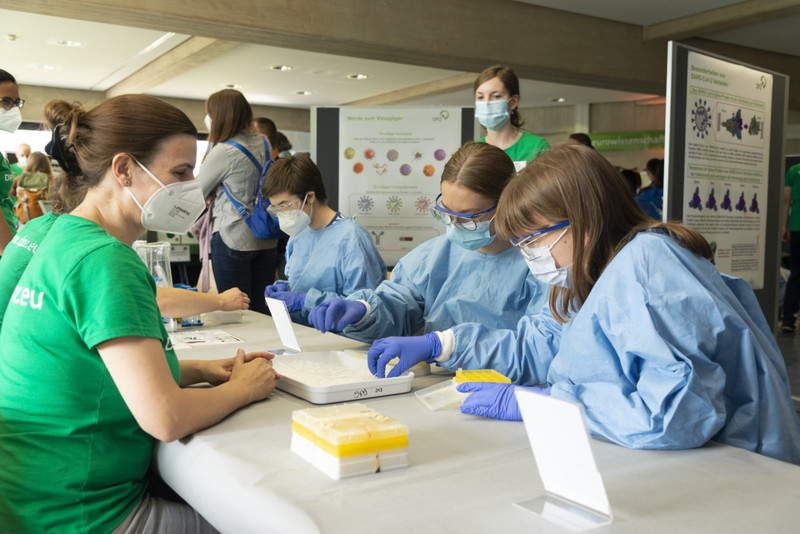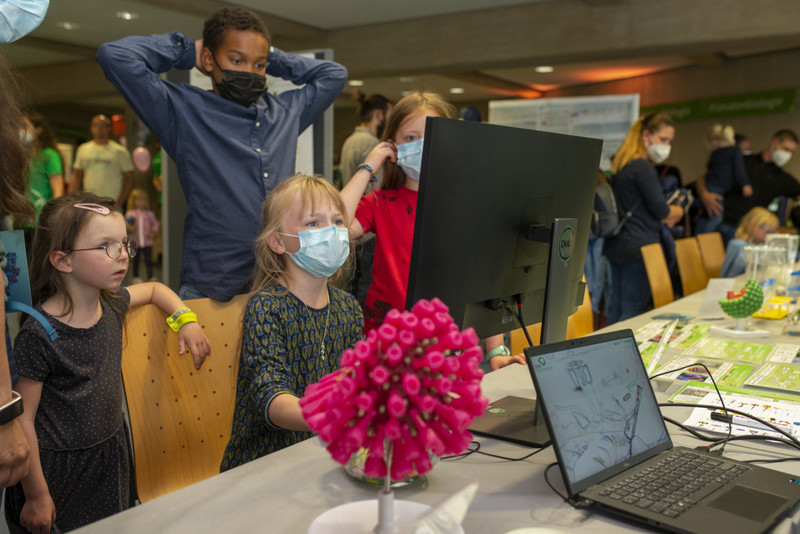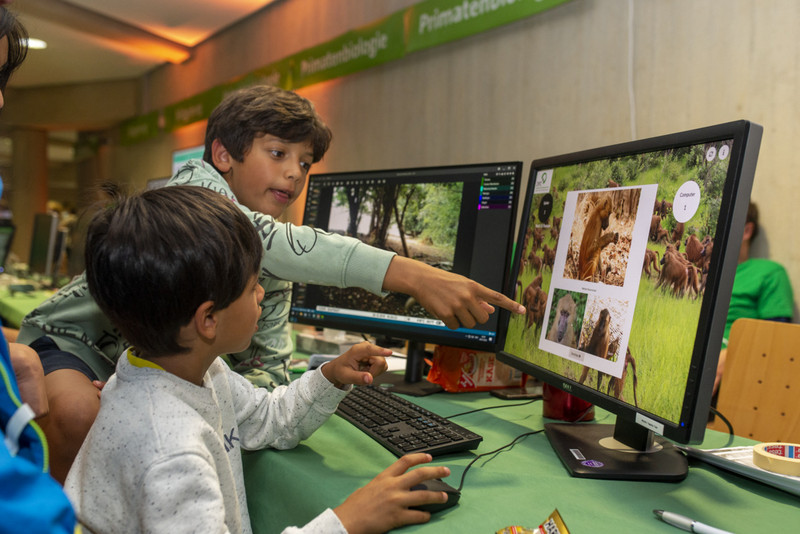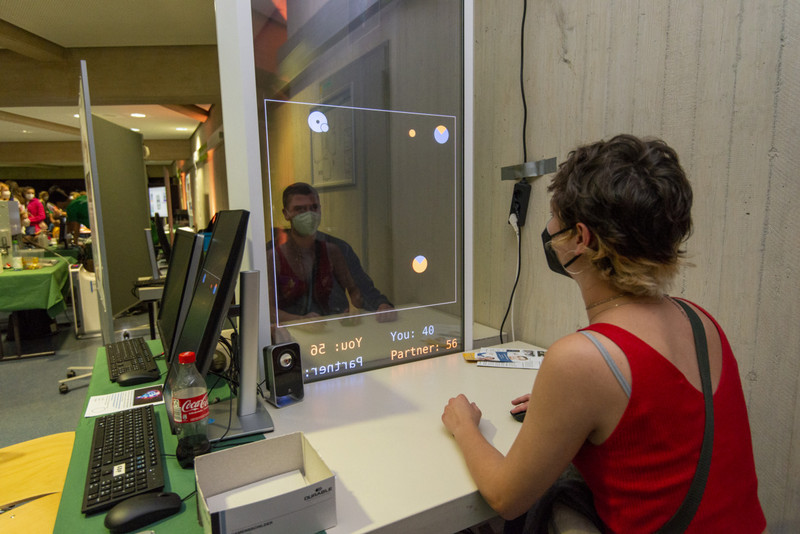Night of Science 2022
There was a lot to discover for visitors young and old at the exciting hands-on activities in neuroscience, functional imaging, behavioural biology and infection biology.
With enthusiasm and great ambition, the visitors identified and destroyed coronaviruses in the infection biology computer game. Right next to it, the young scientists practised pipetting liquids in real safety clothing and learned how a virus enters the cell and makes the body sick.
Field research on free-living monkeys could also be tried out virtually. It took quick reactions and concentration to code the behaviour of a baboon in real time from the video. The visitors also got an exciting insight into everyday life at the Simenti research station in Senegal.
There was a brain teaser for the whole family at the stand of the Functional Imaging Department, because kiwi, avocado and lemon are not easy to identify on MRI images. The scientists gave the spellbound visitors an insight into the inside of the human and animal body using 3D models.
At the neuroscience stand, visitors could try on an electromagnetic data glove that records all finger and hand movements on the computer. They could try out different types of grips and follow the analysis on the screen in real time. Participants were also amazed by a hands-on experiment that demonstrated the adaptability of their own brains during a game of darts.
On a new type of experimental platform, the visitors were able to play through an experiment developed for rhesus macaques. The experimental platform is intended to help understand how the behaviour and social signals of opponents or fellow players are incorporated to predict their decisions.
In a live experiment on face perception, participants were allowed to become part of a real research project. The interactive game tested the visitors' facial perception and the results of all those who agreed are now being scientifically analysed and evaluated.
A special highlight was the quiz rally on cognition and behavior: Those who visited all the stations and answered the questions were allowed to take a fun researcher photo in the DPZ photo box as a souvenir. The researchers and visitors engaged in many interesting and informative conversations and enjoyed the open, relaxed atmosphere at this year's Night of Science.

